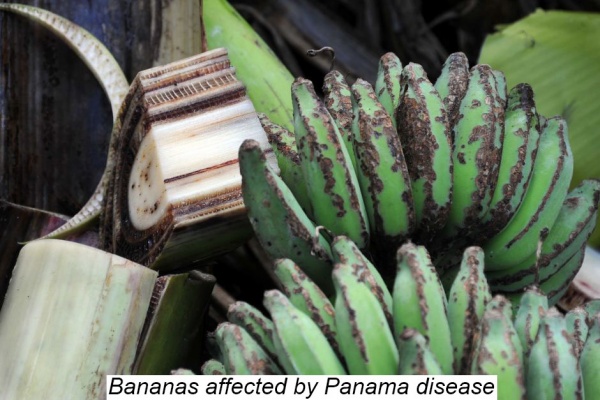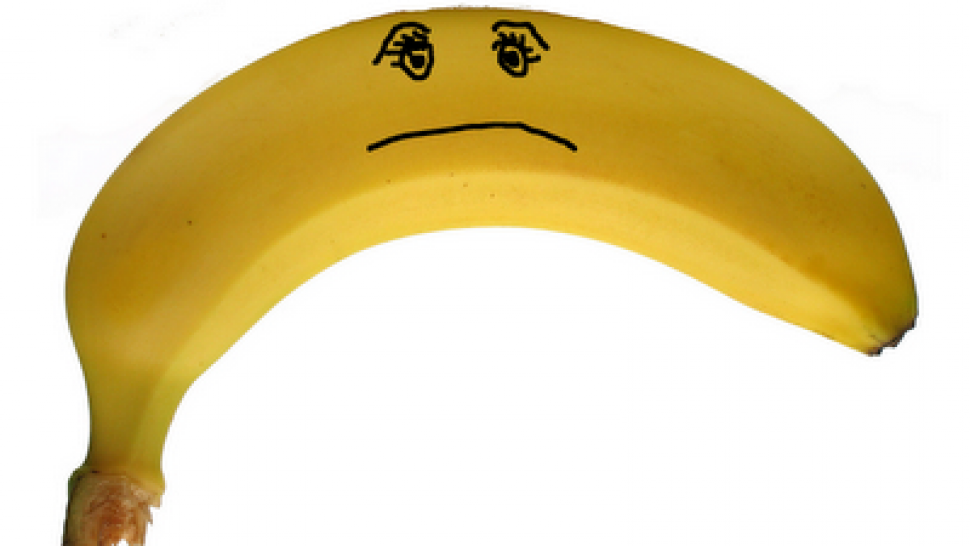Plantations of our favorite fruits are threatened by dangerous fungal disease, known as "Panama disease" which, in the fifties of the last century nearly wiped out "Gros Michel" -- the most widespread type of banana at that time. This variety is much tastier, softer and creamier than "Cavendish" bananas that we eat today.
The European continent is being supplied with a bananas which mainly come from Ecuador, who has not yet been affected by this disease, but if the fungus destroys crops in other countries, Ecuador will not be able to respond to demand. The shortage of bananas in the market will raise their prices.
 The new, more dangerous strain of the Panama disease now attacks Cavendish bananas too, and fungus has already reached Costa Rica. However, all the bananas that are now coming to market around the world are healthy and safe for human consumption, because the infected plants are decaying rapidly, within a few days, and there is no chance for such food to survive long trip to markets in the U.S. and Europe.
The new, more dangerous strain of the Panama disease now attacks Cavendish bananas too, and fungus has already reached Costa Rica. However, all the bananas that are now coming to market around the world are healthy and safe for human consumption, because the infected plants are decaying rapidly, within a few days, and there is no chance for such food to survive long trip to markets in the U.S. and Europe.
Today, scientists are trying to modify the Cavendish variety and make it resistant to the Panama disease. They search the remote jungle regions looking for some sort of wild bananas resistant to disease that would be crossed with known sorts. At the same time, Cavendish is experimentally being genetically modified by adding genes of various types of fruit and vegetables, even fish, in order to create new resistant cultivar.
 There are numerous types of bananas, but we are are best acquainted with yellow Cavendish banana. Along with them there are also exotic baby-bananas, green Guinea bananas used like potatoes, Manzano bananas that are short and thick, black bananas with the flavor which can be described as an odd mixture of flavors of bananas, strawberries and apples...
There are numerous types of bananas, but we are are best acquainted with yellow Cavendish banana. Along with them there are also exotic baby-bananas, green Guinea bananas used like potatoes, Manzano bananas that are short and thick, black bananas with the flavor which can be described as an odd mixture of flavors of bananas, strawberries and apples...
However, scientists agree that the newly created banana will have to meet certain conditions:
1) to have a pleasant taste
2) to grow ripe in a specified time period
3) to be able to survive long trips to U.S. and European supermarkets without rotting
4) that can easily be grown in large quantities
Currently, none of the new hybrid varieties has not yet reached the consumers, because it did not pass this rigorous test.
I just hope this is not another attempt to seamlessly give a boost to GMO foods on their way to the consumers.
Panamanian disaster
In the fifties of the last century, the Panama disease of fungal origin wiped out the plantations of tastiest "Gros Michel" bananas in South America and Africa. They managed to survive only in Thailand. That period is now known as the "banana disaster."
By the sixties, the largest importers of Gros Michel cultivar were on the verge of bankruptcy, so they began to breed less tasty, but resistant Cavendish variety.
Original, delicious Gros Michel bananas are now grown in Malaysia and Thailand, and the best fruits are exported in a very demanding market of Japan, where wealthy customers do not skimp money for the best quality fruit.




Share the News